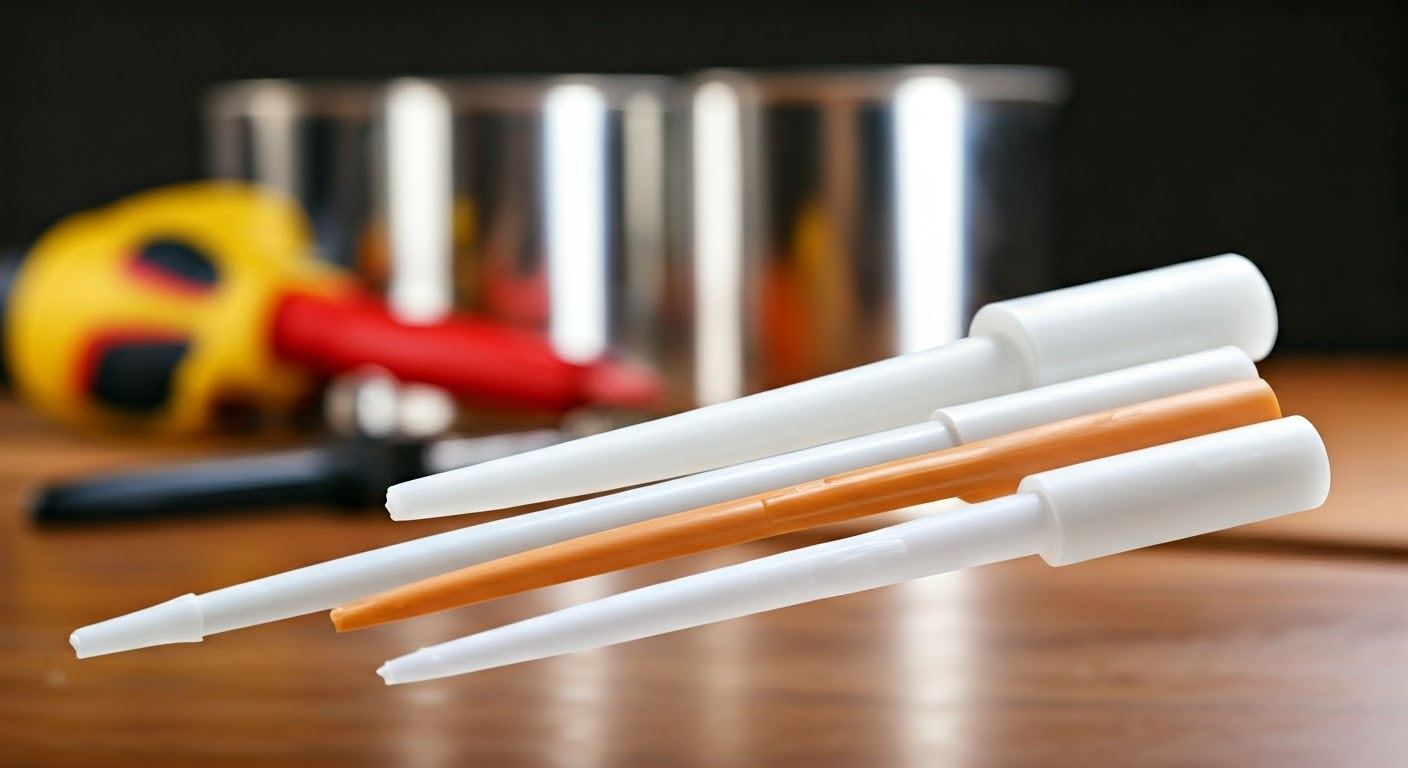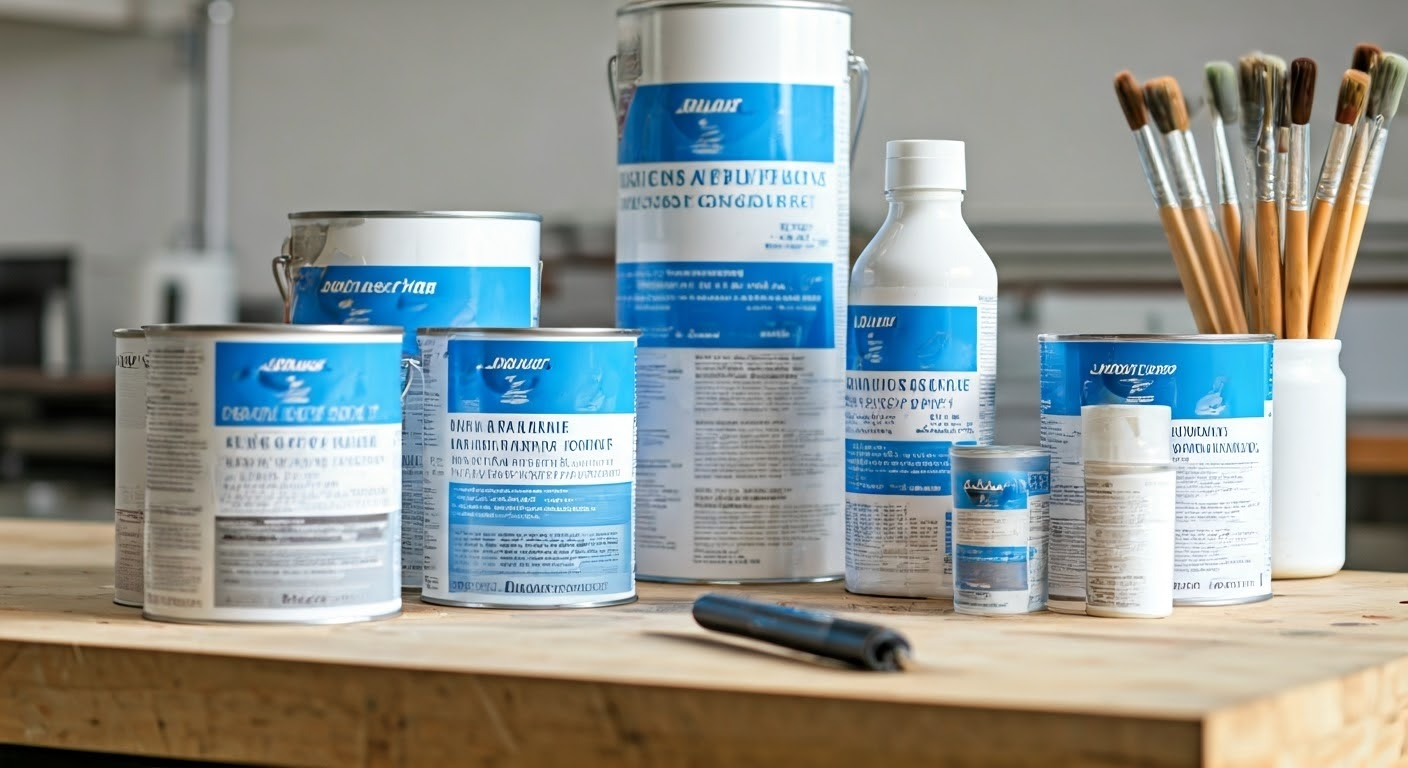
Have you ever needed to paint a surface with silicone sealant and wondered if paint will even stick to it?
While not impossible, painting over this type of sealant can definitely be challenging. But don’t worry, we’ll break down the reasons behind this difficulty and outline the steps you can take to make it a more viable option.
This article will explain the issue in a simple way and provide you with alternative solutions for a smooth and successful painting experience.
Silicone Sealant and Its Challenges

Before we jump into solutions, it’s helpful to understand the root of the problem. Silicone sealants, often just called “silicone,” are popular for their flexibility, durability, and water resistance. These qualities, however, also make them a less-than-ideal surface for paint.
| # | Preview | Product | |
|---|---|---|---|
| 1 |

|
GE Advanced Silicone Caulk for Kitchen & Bathroom,... | Check Price |
| 2 |

|
LANBEIDE 200ML Diamond Painting Sealer with Silicone... | Check Price |
| 3 |

|
Caulking Tool 5 in 1 Silicone Caulking Grout Removal... | Check Price |
| 4 |

|
DAP Alex Plus Acrylic Latex Caulk, White, 10.1 Oz... | Check Price |
Essentially, applying traditional, water-based paints over silicone is like trying to mix oil and water. They just don’t want to bond, and you’ll likely end up with paint that cracks, peels, or simply beads up on the surface.
The Nature of Silicone Sealant
Silicone caulk owes its water-repelling superpowers to the very nature of its chemical structure. Silicones are inherently hydrophobic, meaning they naturally repel water. This characteristic stems from the unique bond between silicon and oxygen atoms in their makeup.
During manufacturing, various raw materials are used to create the final silicone caulk product. These can be budget-friendly, affecting the sealant’s overall quality and potentially impacting its susceptibility to adhesion issues with paint.
So, the very properties that make silicone sealant excellent for sealing out moisture in bathrooms and kitchens also make it resistant to bonding with water-based paints.
Why Silicone is Resistant to Paint
The scientific cause behind silicone’s paint-repelling nature lies in the concept of surface energy. Put simply, silicone has very low surface energy, while water-based paints have high surface energy. Liquids, like paint, naturally try to minimize their surface area, and they do this by beading up on low-energy surfaces instead of spreading out.
This is the main reason why applying standard emulsion paint, which is water-based, directly onto silicone often results in poor adhesion. The paint struggles to “grab” onto the silicone, leading to uneven coverage and a higher risk of paint failure like cracking or peeling later on.
To achieve a successful paint job, we need to bridge this gap in surface energy, and that’s where proper preparation and the right paint choices come in.
| # | Preview | Product | |
|---|---|---|---|
| 1 |

|
GE Advanced Silicone Caulk for Kitchen & Bathroom,... | Check Price |
| 2 |

|
LANBEIDE 200ML Diamond Painting Sealer with Silicone... | Check Price |
| 3 |

|
Caulking Tool 5 in 1 Silicone Caulking Grout Removal... | Check Price |
| 4 |

|
DAP Alex Plus Acrylic Latex Caulk, White, 10.1 Oz... | Check Price |
Preparing Silicone Sealant for Painting
While there’s no foolproof method to guarantee paint will stick to silicone perfectly, taking the time to properly prep the surface can greatly increase your chances of success. Think of it as creating a foundation for the paint to hold onto.
This typically involves a two-pronged approach: thorough cleaning and then taking steps to physically or chemically roughen up the silicone’s surface. The cleaner and more textured the silicone, the better the paint will adhere.
Cleaning and Surface Preparation
Cleaning might seem like a no-brainer, but it’s a crucial first step. Any dust, dirt, grease, or mildew on the silicone will hinder paint adhesion. Use a mild detergent solution and a scrub brush or sponge to thoroughly clean the entire surface area of the silicone.
Once clean, you’ll want to create some “tooth” for the paint to grip. This can be done mechanically, by gently sanding the silicone with fine-grit sandpaper, or chemically, by using a specialized silicone primer or a solvent like isopropyl alcohol.
If using solvents, ensure the area is well-ventilated and always test a small, inconspicuous area first to check for any adverse reactions. The goal is to lightly roughen the surface without damaging the silicone.
Key Steps to Improve Paint Adhesion
After cleaning and surface preparation, consider these further steps for an optimal painting surface:
- Priming: Adhesive specialists recommend using a primer specifically designed to bond with silicone. This will create a more receptive base for the paint to adhere to. Apply a thin, even coat and allow it to dry completely according to the manufacturer’s instructions.
- Caulking Edges: If painting over a silicone joint, apply a thin bead of paintable acrylic caulk along the edges of the silicone. This will help to create a smooth transition between the silicone and the surrounding surface.
- Test Area: Before committing to painting the entire area, always test your chosen paint on a small, inconspicuous area. This very top line demonstration will help you gauge how well the paint adheres and identify any potential problems early on.
By meticulously following these steps, you’ll significantly improve the odds of achieving a long-lasting and professional-looking paint job.
Selecting the Right Paint and Primers for Silicone

Not all paints are created equal, especially when it comes to painting over silicone. Traditional water-based paints, while commonly used, can be problematic due to silicone’s water-repelling nature. However, fret not, there are alternatives!
Oil-based paints tend to adhere better to silicone due to their solvent base. Additionally, utilizing a primer explicitly designed for silicone is crucial. These primers act as intermediaries, creating a bond between the slick silicone and the paint.
Types of Paint Compatible with Silicone
While oil-based paints are generally a safer bet, it’s always recommended to choose a paint formulated for flexibility. This is especially critical for areas prone to movement, like expansion joints, to prevent cracking.
If you’re set on using emulsion paint, consider these alternative methods:
|
Method |
Description |
|
Etching Primer |
Creates a rough surface on the silicone for improved mechanical adhesion. |
|
Bonding Primer/Sealer |
Forms a chemical bond with both the silicone and the topcoat. |
|
Specialty Silicone Paint |
Specifically engineered for use on silicone surfaces. |
Remember that compatibility can vary between different types of sealants and paint brands. Always check the manufacturer’s recommendations for the specific products you’re using.
The Role of Primers in Painting Over Silicone
Think of a primer as the glue that helps hold the paint to the silicone. Because silicone has a non-porous surface, paint has a hard time sticking to it directly. Primers designed for this purpose are specially formulated to penetrate the silicone and create a more porous, receptive base.
When choosing a primer, consider your project’s specific requirements. For instance, if you’re working with a high-movement area, opt for a flexible primer to accommodate potential expansion and contraction. Alternatively, if you’re painting over silicone that’s exposed to moisture, a mildew-resistant primer would be a wise choice.
Remember, using the correct primer will significantly improve the durability and lifespan of your paint job, preventing issues like peeling, cracking, and chipping down the line.
Conclusion
When painting over silicone sealant, proper preparation is key to achieving a successful outcome. By understanding the nature of silicone and its paint-resistant properties, you can take steps to enhance paint adhesion.
Cleaning and surface preparation are crucial, along with selecting compatible paints and primers.
Choosing the right products can make a significant difference in the longevity and appearance of the painted surface. By following these guidelines and using the appropriate materials, you can effectively paint over silicone sealant for a durable and aesthetically pleasing finish.
If you have any further questions or need assistance with painting over silicone sealant, feel free to check out our FAQ section or contact us for expert advice.
Frequently Asked Questions
Can you directly paint over silicone sealant without a primer?
Direct application of paint onto silicone without a primer is not recommended. Due to silicone’s slippery nature, paint adherence will be poor, increasing the risk of peeling and cracking. A primer designed for this purpose is crucial for lasting results.
What are the best primers for silicone sealants?
Adhesive manufacturers often produce primers specifically formulated for use with their silicone sealants. Check with the sealant manufacturer for their recommendations. Choosing the correct primer ensures an effective sealant and paint bond, ultimately leading to a longer-lasting and better-looking finish.
